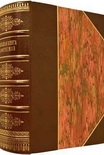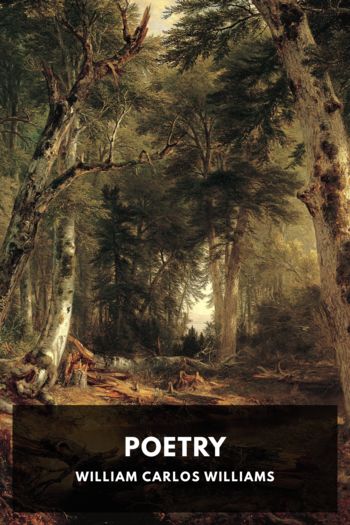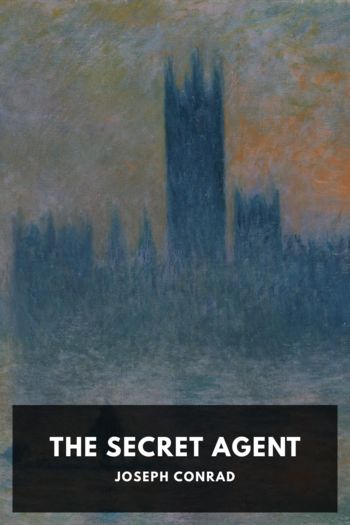Hidden History: Lost Civilizations, Secret Knowledge, and Ancient Mysteries, Brian Haughton [books you need to read .TXT] 📗

- Author: Brian Haughton
Book online «Hidden History: Lost Civilizations, Secret Knowledge, and Ancient Mysteries, Brian Haughton [books you need to read .TXT] 📗». Author Brian Haughton
What is puzzling about the Voynich Manuscript is that it is written in a unique alphabetic script whose letters do not resemble English, or any other European letter system. It has puzzled the greatest cryptographers of the 20th century and continues to do so today. After purchasing the book in 1912, Wilfred Voynich made photostats of it and distributed them to cryptographers, experts in ancient languages, astronomers, and botanists, but they could make nothing of the odd language employed in the manuscript. Dr. William Romaine Newbold of the University of Pennsylvania, a student of medieval philosophy and science (and also a cryptographer) thought he had broken the code in 1919. However, his interpretation was later disproved. During World War II, expert British and American codebreakers studied the manuscript but failed to decipher a single word.
The history of the Voynich Manuscript is fittingly mysterious and unusual. It may have originally belonged to the eccentric Emperor Rudolph II of Bohemia (1552-1612) who is said to have bought it in around 1586 for 600 gold ducats (just over $60,000 today), from an unknown seller, who some have suggested was John Dee, an English occultist and astrologer to Queen Elizabeth I. What is known for sure is that the signature of botanist, alchemist, and private physician to Rudolph, Jacobus Horcicky de Tepenecz, is on the folio. He died in 1622, after which the next identified owner of the book is an alchemist called Georgius Barschius, who called it a sphynx, in reference to its enigmatic contents, which he was not able to translate. At his death, some time before 1662, he left the book, along with the rest of his library, to his friend Johannes Marcus Marci, one time rector of Charles University in Prague.
The surviving manuscript has a letter dated 1666 attached to it, written in Latin by Marci to the learned German Jesuit scholar Athanasius Kircher in Rome. The letter offers the manuscript to Kircher for decoding and mentions it as once being the property
of Emperor Rudolf II. Marci further adds that it was believed by some that the manuscript was written by English Franciscan friar and philosopher Roger Bacon, who lived from 1214 to 1294, though it is clear from the letter that Marci himself was not convinced of this. The manuscript became the property of Kircher's institute, the Roman Jesuit University (the Collegio Romano) where it may have been stored in its library until Victor Emmanuel II of Italy annexed the Papal States in 1870, and it was moved to the Jesuit College at the Villa Mondragone, where Voynich discovered it in 1912. After Voynich died in 1930, the manuscript was inherited by his widow, the author Ethel Lilian Voynich. After Voynich's widow died in 1960, the book was inherited by her friend, Miss Anne Nill. In 1961, New York antiquarian book dealer H.P. Kraus made headlines when he bought the manuscript from her for the sum of $24,500. The manuscript was later valued at $160,000, but Kraus was unable to sell it, and in 1969 donated it to Yale University, where it is kept today in the Beinecke Rare Book and Manuscript Library.
The manuscript itself measures about 6 by 9 inches and contains around 240 vellum pages, though it may once have had more than 270. The enciphered text was written by hand using a quill pen, which was also used for the outline of the crudely drawn figures, and later a kind of colored paint was added to these figures. The majority of the pages contain illustrations colored in red, blue, brown, yellow, and green, and these drawings indicate that the book was divided up into five parts, each dealing with different subjects. The first and longest section, filling almost half the volume, is known as the Herbal section. Each page in this part consists of one or sometimes two illustrations of plants accompanied by a few paragraphs of text. The plants in the drawings cannot always be identified, and some are probably fanciful inventions. The next section contains (among other things) drawings of suns, moons, and stars, and has been identified as astronomical and astrological in nature. Following this is a section called the Biological, as it contains some apparently anatomical figures, including small, nude women, and pipes and tubes that resemble blood vessels. The fourth is a section which has been labeled Pharmaceutical, as it includes pictures of plant roots, leaves, and other plant parts and labeled containers, which may be apothecary jars. The fifth and last part is the Recipes section, and includes a number of short paragraphs, each marked with a star in the margin; this section may have been some kind of calendar or almanac. The book ends with a page containing the Key.
In 1944, Hugh O'Neill, Benedictine monk and botanist at the Catholic University, identified some plants illustrated in the book as being species from the Americas, specifically an American sunflower and a red pepper. This would mean that the manuscript must date after 1493, when Columbus brought the seeds to Europe. However, the illustrations are not at all clear in the manuscript, and some have disputed O'Neill's identifications. An interesting development regarding the manuscript came in the 1970s with
Captain Prescott Currier, a U.S. military cryptology expert. Based on the statistical properties of the text, he identified two distinct styles in the manuscript, which he interpreted as two separate languages, which he dubbed A and B. His conclusion was that the manuscript had been written by at least two different people, although it is conceivable that it could have been written by a single individual at different times.
There have been many theories as to the language used in the manuscript, its origins, and its purpose. One of the names put forward most often is that of Roger Bacon, a man often persecuted for his writings and





Comments (0)